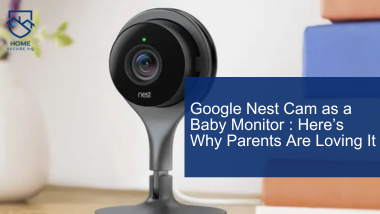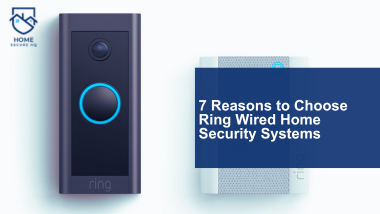Have you ever wished your home could handle the little things for you, like adjusting the thermostat before you arrive or turning off the lights you left on in a rush? You’re not alone.
Research shows that nearly 60% of homeowners are interested in smart technology but often don’t know where to begin. That’s why starting with simple home automation tips can make all the difference.
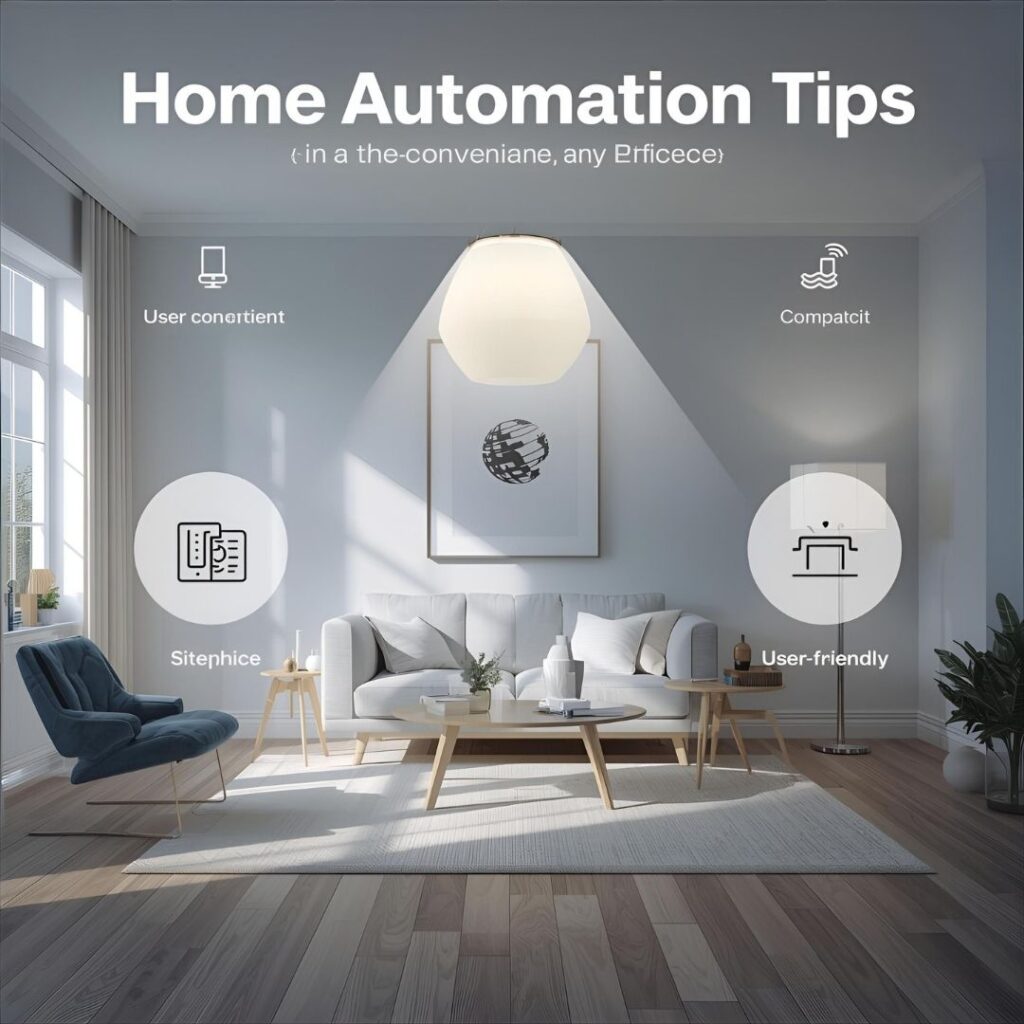
The truth is, home automation doesn’t need to be complicated or expensive. You don’t need a futuristic “smart house” filled with gadgets you barely understand. Instead, it’s about making small, practical upgrades that improve daily life—saving energy, boosting security, and adding convenience.
In this guide, we’ll break down the basics in a clear, approachable way. From smart plugs and security cameras to energy-saving thermostats, you’ll learn how to start small, avoid common mistakes, and gradually build a system that grows with your lifestyle.
By the end, you’ll see that creating a smart home isn’t just for tech lovers—it’s for anyone who values comfort, simplicity, and peace of mind.
What Is Home Automation? (The Basics Explained)
At its core, home automation means using smart technology to control everyday household functions automatically or remotely. Think of it as putting your home on autopilot—whether that’s turning lights on at sunset, adjusting the thermostat while you’re away, or checking your door camera from your smartphone.
Starting with simple home automation tips makes it easy for anyone to see how these tools can simplify daily life.
The concept of “smart homes” has been around for decades, but it wasn’t until Wi-Fi became fast, affordable, and reliable that automation truly became mainstream. Early systems were expensive and required professional installation. Today, home automation basics are affordable, wireless, and simple enough for any homeowner to set up on their own.
Some popular examples you may already recognize include:
- Smart lighting – bulbs or switches controlled by your phone or voice assistant.
- Smart security cameras – offering live video feeds and motion alerts.
- Smart thermostats – learning your habits and reducing energy costs automatically.
These practical upgrades form the foundation of modern home automation, making it easier than ever to take the first step toward a smarter lifestyle.
Why Home Automation Matters for Homeowners
For homeowners seeking meaningful improvements, home automation isn’t just about cool tech—it’s about making everyday life more convenient, secure, and cost-efficient. Here are the biggest benefits:
- Convenience – Control devices with your phone, schedule routines, or use voice assistants to manage your home hands-free.
- Energy Savings – Smart thermostats help cut heating and cooling costs, while energy-efficient lighting ensures you never waste electricity.
- Safety & Security – Smart locks, cameras, and video doorbells provide 24/7 monitoring and peace of mind, even when you’re away.
- Confidence & Comfort – Receive alerts when something unusual happens, or check on your home remotely at any time.
By choosing the right devices, homeowners gain lasting comfort and confidence in their living spaces.
Beginner-Friendly Home Automation Tips: Easy Upgrades to Try First
Getting started with home automation doesn’t require a complete system overhaul. The best strategy is to begin with small, budget-friendly devices that deliver immediate results. Here are four beginner-friendly upgrades:
- Smart bulbs and plugs – Affordable and simple to install, letting you control lights and appliances remotely.
- Smart speakers/assistants – Alexa, Google Assistant, or Siri act as hubs, allowing you to manage multiple devices with your voice.
- Video doorbells – Strengthen security by letting you see and talk to visitors, whether you’re home or away.
Wi-Fi thermostats – Adjust heating and cooling from your phone, saving energy and money. These beginner-friendly home automation tips give you a taste of what automation can do and create the foundation for a connected home that grows with your needs.
Building a Smarter Home Step by Step
Once you’re comfortable with the basics, you can expand gradually. The key is to start small and build strategically. Instead of trying to automate everything at once, begin with one system—such as lighting—and add other features like security or climate control later.
A few home automation tips to keep in mind as you grow:
- Strengthen your Wi-Fi network, since all smart devices depend on reliable connectivity.
- Choose compatible devices that work well together to avoid frustration.
- Follow a clear upgrade path: Start with smart lighting → add a video doorbell → upgrade to a thermostat → integrate security cameras and locks.
This step-by-step method keeps things simple and ensures your smart home grows at your own pace.
Common Mistakes to Avoid in Home Automation
Many homeowners rush into automation only to run into frustration. To save time, money, and stress, avoid these common mistakes:
- Buying random devices without checking compatibility.
- Forgetting about cybersecurity—always use strong passwords and update your apps and devices.
- Overcomplicating your setup with too many apps instead of consolidating into one platform.
- Ignoring ongoing costs like subscriptions or add-on equipment.
By staying mindful of these pitfalls, your journey into home automation basics will feel smoother and more rewarding.
Must-Have Starter Devices for Beginners
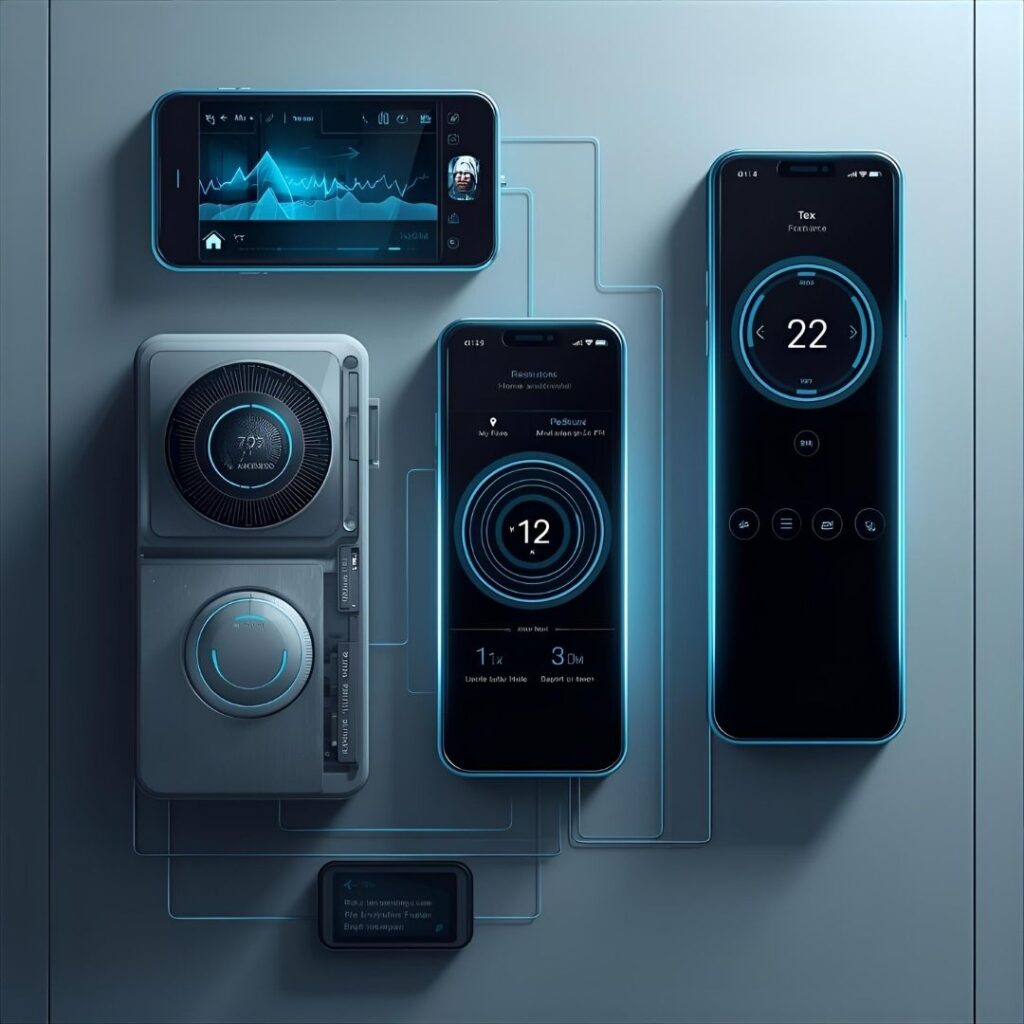
When it comes to home automation tips, the best approach is to start with small, affordable devices that offer immediate benefits. These must-have starter tools make the transition stress-free and set a solid foundation for a connected home:
Smart Plug
- Controls ordinary appliances—like lamps, coffee makers, or fans—through your smartphone or voice assistant.
- Affordable and easy to install, making it one of the most practical first upgrades.
- Perfect for homeowners who want to test automation without major investment.
Smart Bulb
- Provides customizable lighting with adjustable brightness, colors, and schedules.
- Helps lower energy use while improving comfort and ambiance.
- Often works with voice assistants, so you can control lighting with simple commands.
Smart Speaker (Voice Assistant)
- Acts as the central hub of your smart home.
- Supports voice commands to manage lighting, appliances, thermostats, and more.
- Popular options like Amazon Alexa, Google Nest, or Apple HomePod make managing devices seamless.
These three beginner-friendly devices are low-cost, easy to set up, and instantly add comfort and convenience. They’re also the foundation for expanding into more advanced home automation tips later on.
Other Practical Devices to Consider
Once you’ve mastered the basics, you may be ready to expand your setup. Here are a few more smart upgrades that can make a big difference:
- Video Doorbell – Monitor and interact with visitors remotely, whether you’re upstairs or miles away.
- Smart Thermostat – Automatically adjusts temperature for comfort and energy savings, learning your daily habits.
- Smart Security Camera – Provides live feeds and instant alerts, giving you extra peace of mind.
- Smart Lock – Offers keyless entry and remote locking, making home security effortless.
By adding these devices step by step, you’ll create a flexible smart ecosystem that adapts to your lifestyle. These home automation tips show how simple upgrades can boost comfort, security, and efficiency.
Home Automation Tips: Common Mistakes Homeowners Make

While learning home automation basics is exciting, many homeowners run into avoidable mistakes that affect performance and security over time. Here are some key home automation tips on what not to do:
1. Neglecting Regular Updates
Smart devices need software and firmware updates to stay secure. Skipping these can leave your home vulnerable to hacks. One of the most overlooked home automation tips is to enable automatic updates whenever possible.
2. Forgetting About Data Privacy
Some homeowners install cameras and microphones without adjusting privacy settings. Review app permissions and choose trusted brands. A key home automation tip is to always check how your data is stored and shared.
3. Relying Too Much on Voice Control
Voice assistants are convenient, but depending on them for everything can backfire if your internet goes down. Another essential home automation tip is to keep a backup way to control devices, such as physical switches or app controls.
4. Ignoring Energy Consumption
Ironically, too many smart devices can increase energy use. Be selective and use power management features. One of the simplest home automation tips is to track energy reports from your smart plugs or thermostats to make smarter choices.
Quick-Glance Checklist for Homeowners
To make these ideas easy to apply, here’s a simple checklist built around proven home automation tips:
Start With:
- 1–2 smart plugs for everyday appliances.
- A smart bulb to test lighting control.
- A smart speaker for central management.
Expand With:
- Smart thermostat for energy efficiency.
- Video doorbell for added security.
- Smart locks for convenience and peace of mind.
Avoid:
- Buying incompatible devices.
- Running systems on weak Wi-Fi.
- Ignoring updates and cybersecurity practices.
This checklist helps homeowners confidently take the first steps toward a smarter home while avoiding common mistakes.
Future-Proofing Your Smart Home
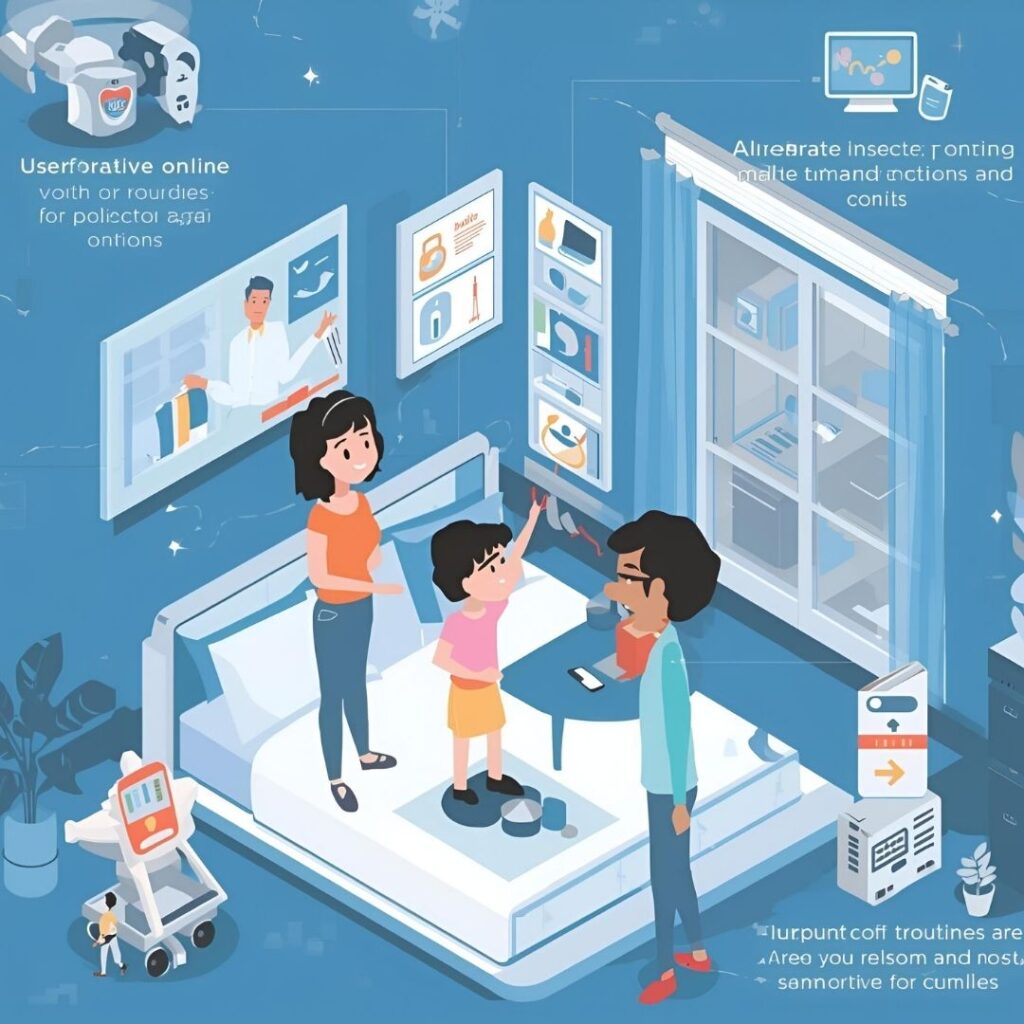
Smart home technology is constantly evolving, which makes long-term planning essential. The smartest home automation tips focus on scalability and flexibility—building a system that grows with your lifestyle instead of locking you into short-term fixes.
Key Trends to Watch:
- Voice Control & AI Integration – From adjusting your thermostat with a quick command to AI-driven systems that learn your daily routines, homes are becoming smarter and more intuitive.
- Energy-Efficient Devices – Smart thermostats, energy-saving bulbs, and connected appliances lower bills while reducing environmental impact.
- Smart Hubs & Ecosystems – Instead of juggling multiple apps, centralized hubs connect all your devices for seamless control.
By following these home automation tips, you’ll future-proof your smart home. Always look for systems that start small but can expand over time. With the right foundation, your home will stay efficient, secure, and ready for whatever technology comes next.
Conclusion: Take the First Step Toward a Smarter Home
Creating a smarter home doesn’t require expensive renovations or complex systems. By starting with simple home automation tips like adding smart plugs, bulbs, and speakers, you can instantly bring more convenience, security, and energy savings into your daily routine.
From there, expanding into thermostats, video doorbells, or smart locks becomes a natural step toward a fully connected home. The secret is to start small and take action now. Even one upgrade can show you how much comfort and peace of mind home automation tips can bring.
If this guide inspired you, subscribe to our blog for more research-based smart home advice. Share it with a friend who’s thinking about upgrades, and join the conversation by commenting on the device you’d love to try first.
Your home already has the potential to be safer, smarter, and more efficient. The only thing left is for you to take the first step today.






